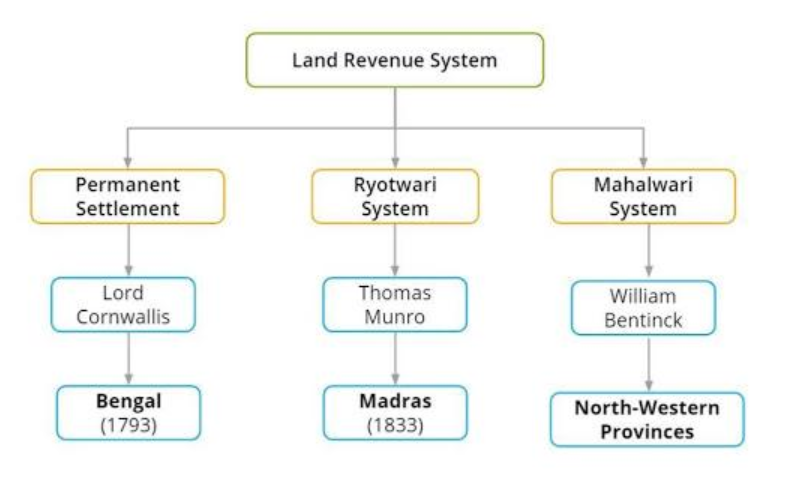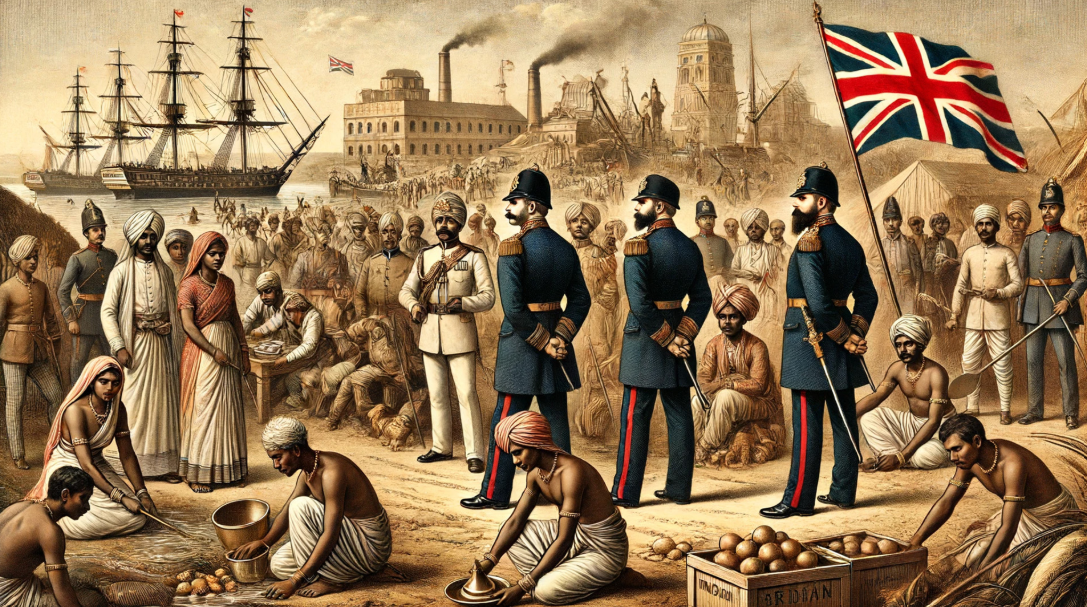Modern History Playlist
19 chapters • 0 completed
Advent of Europeans in India
9 topics
Decline of the Mughal Empire
7 topics
Emergence of Regional States
11 topics
Expansion and Consolidation of British Power
19 topics
British Government & Economic Policies (1757–1857)
4 topics
Social Reform Movements
20 topics
People’s Resistance before 1857
3 topics
The revolt of 1857
6 topics
Growth of Nationalism and Moderate Phase of Congress
6 topics
British Administration in India
7 topics
Era of Militant Nationalism (1905-1909)
5 topics
First Phase of Revolutionary Activities(1907-1917)
8 topics
India’s Response to First World War and Home Rule Movement
4 topics
Emergence of Gandhi
6 topics
Non-Cooperation Movement and Khilafat Movement
7 topics
Emergence of Swarajists, Socialist Ideas, Revolutionary Activities
5 topics
Struggle For Swaraj: 1928-1935
13 topics
Period from 1935-42
9 topics
Period from 1942-47
22 topics
Chapter 5: British Government & Economic Policies (1757–1857)
Chapter TestStructure of Government under the Company
The East India Company’s rule evolved from a trading corporation’s administration to a structured colonial government, regulated increasingly by the British Parliament.
The East India Company’s rule evolved from a trading corporation’s administration to a structured colonial government, regulated increasingly by the British Parliament.
Major Acts (1773–1853)
| Year | Act | Key Features |
|---|---|---|
| 1773 | Regulating Act | Governor of Bengal → Governor-General of Bengal (Warren Hastings first); Supreme Court at Calcutta (1774); first step of Parliamentary control; Company officials prohibited from private trade; aimed at curbing corruption. |
| 1781 | Amending Act | Also called Act of Settlement; clarified powers of Supreme Court; restricted jurisdiction over Governor-General and Council; reduced conflicts between Court and Council. |
| 1784 | Pitt’s India Act | Created Board of Control in Britain; introduced 'dual system of control' (Company + Parliament); Governor-General’s council reduced to 3 members; distinguished political and commercial functions. |
| 1813 | Charter Act | Ended Company monopoly in trade (except tea and China trade); permitted Christian missionaries; earmarked ₹1 lakh annually for promotion of education; asserted Crown sovereignty over Company’s possessions. |
| 1833 | Charter Act | Created Governor-General of India (Lord William Bentinck first); complete end of Company’s trade monopoly (even tea/China); India became purely administrative empire; first Law Commission under Macaulay; slavery abolished later in 1833. |
| 1853 | Charter Act | Introduced open competition for Indian Civil Services (ICS); separated legislative and executive functions of Governor-General’s council; no fixed period for Company’s charter (could be ended anytime); opened door for Indians in civil services (though exams held only in London). |
Fun Facts
Supreme Court judges in Calcutta (1774) clashed with Warren Hastings’ Council, causing a constitutional crisis.
The 1813 Act allowed Christian missionaries to legally operate in India for the first time.
Mains Key Points
Prelims Strategy Tips
Land Revenue Policies
British land settlements focused on maximizing revenue, often at the expense of peasants. Different systems were introduced across regions.
British land settlements focused on maximizing revenue, often at the expense of peasants. Different systems were introduced across regions.

Major Land Revenue Systems
| System | Region | Introduced by | Features | Impact |
|---|---|---|---|---|
| Permanent Settlement | Bengal, Bihar, Orissa | Cornwallis (1793) | Zamindars as landlords; fixed revenue forever | Peasant oppression; famine; zamindar defaults |
| Ryotwari | Madras, Bombay | Thomas Munro, Elphinstone | Direct settlement with cultivators; periodic revision | High burden on peasants; indebtedness |
| Mahalwari | NW Provinces, Punjab | R.M. Bird (1833) | Village (mahal) collectively responsible | Strengthened village elite; peasant burden remained |
| Taluqdari | Awadh | Dalhousie’s policy | Taluqdars acted as intermediaries | Increased exploitation; resentment in 1857 |
| Indigo System | Bengal | Planters | Forced indigo cultivation | Led to Indigo Revolt (1859–60) |
Fun Facts
Under Permanent Settlement, many zamindars lost estates due to inability to pay fixed high revenue.
The Indigo Revolt inspired Dinabandhu Mitra’s play *Nil Darpan* (The Indigo Mirror).
Mains Key Points
Prelims Strategy Tips
Economic Policies
British economic policies de-industrialized India and integrated it into the global capitalist system as a raw material supplier and market for British goods.
British economic policies de-industrialized India and integrated it into the global capitalist system as a raw material supplier and market for British goods.

Economic Changes (1757–1857)
| Policy/Feature | Impact |
|---|---|
| Import of British textiles | Collapse of Indian handicrafts |
| Export of raw materials | Shift to cash crops (cotton, indigo); food insecurity |
| Drain of Wealth | Systematic transfer of Indian wealth abroad |
| Opium cultivation | Profits for British; misery for peasants; war with China |
| Railways (1853) | Facilitated exploitation; not industrialisation |
Fun Facts
Dadabhai Naoroji called British rule 'Un-British Rule in India'.
Railway contracts guaranteed profits for British investors.
Mains Key Points
Prelims Strategy Tips
Impact on Indian Society
British policies disrupted traditional structures, created new classes, and laid the basis of modern Indian economy and politics.
British policies disrupted traditional structures, created new classes, and laid the basis of modern Indian economy and politics.
Fun Facts
Dadabhai Naoroji’s book *Poverty and Un-British Rule in India* (1901) made Drain Theory popular.
Mains Key Points
Prelims Strategy Tips
Chapter Complete!
Ready to move to the next chapter?
